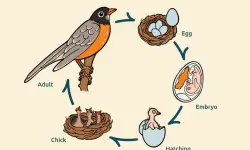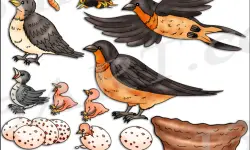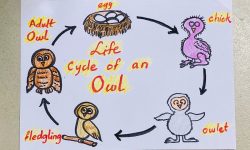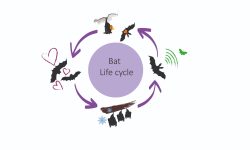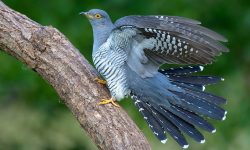Crows are among the most intelligent and adaptable birds in the world. Belonging to the Corvidae family, they are known for their problem-solving skills, social behavior, and glossy black plumage. But crows are not alone in their cleverness and charisma. Many birds across the globe share similar features in appearance, intelligence, vocal ability, or behavior. In this guide, we explore 15 birds like crows—some are close relatives, while others are strikingly similar in look or lifestyle.
1. Ravens (Genus Corvus)
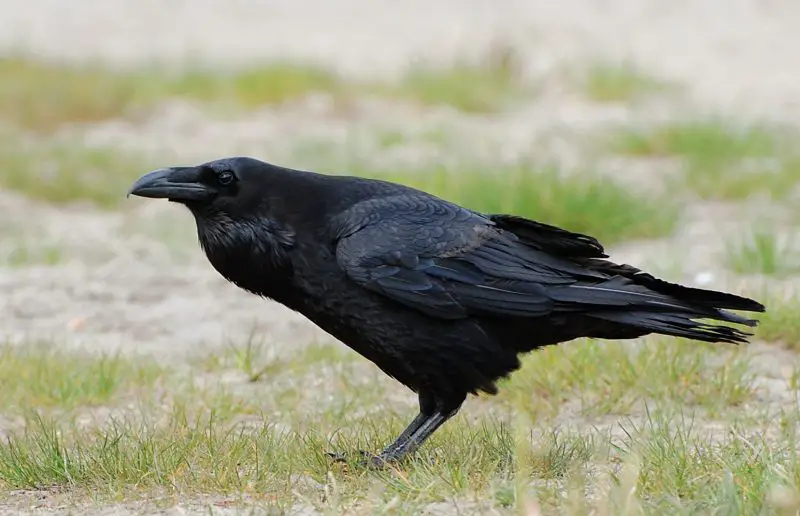
Majestic Minds in Black Feathers
Ravens are often mistaken for crows, and it’s easy to see why—they share the same glossy black plumage, sharp intelligence, and complex social lives. But look a little closer, and you’ll discover that ravens are not just bigger cousins of crows—they’re larger, louder, and arguably even more enigmatic.
With wingspans reaching up to four feet and thick, shaggy throat feathers, ravens cut a more imposing figure than their smaller relatives. Their tails are distinctly wedge-shaped, especially noticeable during flight, and their wings beat in deep, deliberate strokes that make them seem more like soaring raptors than city-dwelling crows.
But it’s not just their size that sets them apart—it’s their astonishing intelligence. Ravens have been observed using tools, solving complex puzzles, planning for the future, and even playing games in mid-air, such as sliding down snowy roofs or flipping while flying just for fun. Their vocal repertoire is equally impressive, ranging from deep croaks and knocking sounds to eerily accurate mimicry of other animals and even human voices.
Ravens are widely distributed across the Northern Hemisphere, from Arctic tundras to desert canyons. They are highly adaptable and often bond with humans in remote regions, following hikers, interacting with farmers, or even stealing food from campers with clever strategies.
To many cultures, ravens are more than birds—they’re mystics, tricksters, and messengers. Their intelligence, power, and air of mystery have earned them a unique place both in the wild and in our stories.
2. Rooks (Corvus frugilegus)
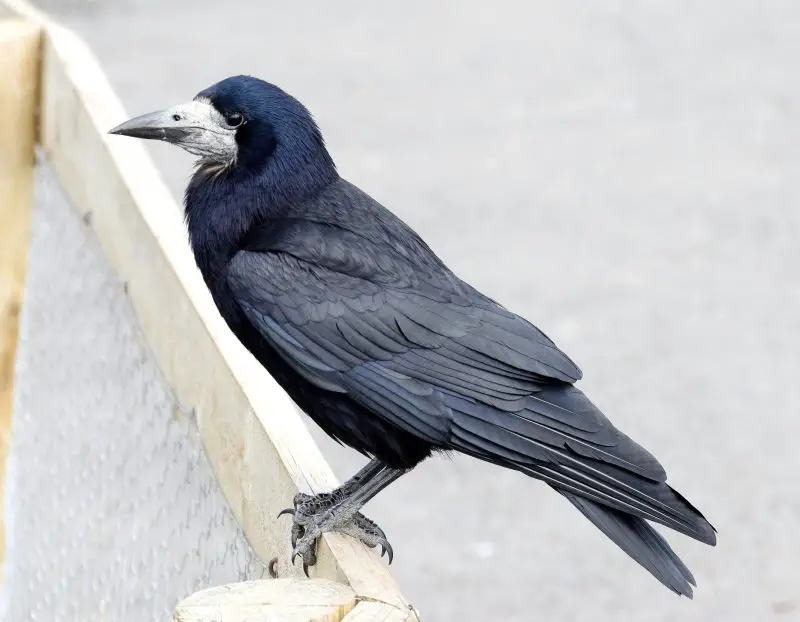
The Community Builders of the Corvid World
At first glance, a rook may seem like just another crow—but a closer look reveals a bird with its own distinct character and social flair. Found across Europe and parts of Asia, rooks are gregarious, intelligent, and unmistakable once you know what to look for.
These birds share the familiar inky black feathers of their corvid cousins, but adults can be identified by a unique feature: a bare, pale-gray patch of skin around the base of the bill, giving them a somewhat “bare-faced” appearance. This adaptation is thought to aid in foraging, especially when digging into soil for insects and grubs.
What truly sets rooks apart is their deeply communal lifestyle. While many corvids are independent or form small family units, rooks thrive in the company of hundreds. They nest in massive colonies known as rookeries, often in tall trees near farmland or village edges, where their noisy chatter fills the air. These social gatherings aren’t just about nesting—they also reflect complex social bonds and cooperative behavior, with rooks often engaging in preening, food sharing, and group defense.
Like crows and ravens, rooks are tool users and problem solvers, known to manipulate sticks or leaves to extract insects or access hard-to-reach food. In agricultural landscapes, they have adapted to human activity with remarkable ease—sometimes becoming both helpers by eating crop pests and nuisances when flocking in large numbers.
Curious, sociable, and sharp-witted, rooks represent a different face of the corvid family: one that values community, connection, and cleverness in numbers.
3. Jackdaws (Corvus monedula)
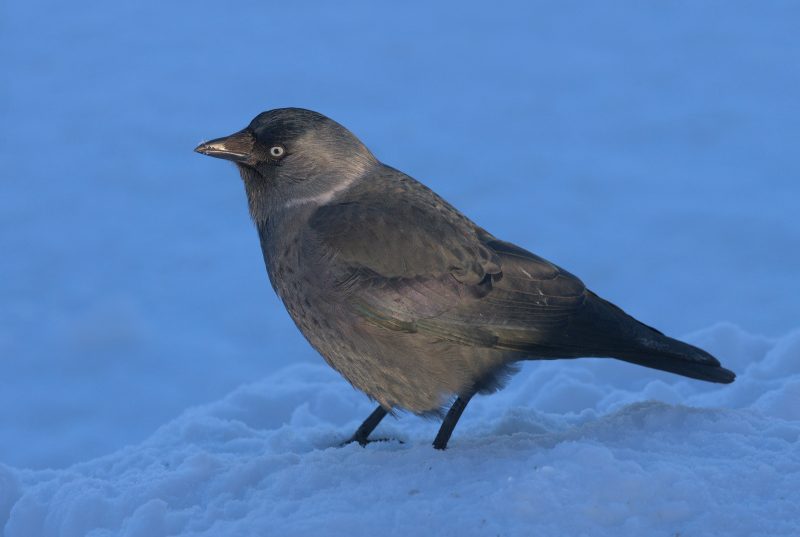
Little Corvids with Big Personalities
Don’t let their small size fool you—jackdaws are among the most charming, intelligent, and socially complex members of the crow family. As the smallest species in the Corvus genus, they measure just over a foot long, but what they lack in size they make up for in curiosity and charisma.
Easily recognized by their striking silver-gray nape, shimmering black crown, and pale, almost ice-blue eyes, jackdaws have a sleek, handsome appearance that sets them apart from other corvids. Their gaze is sharp and alert, reflecting the keen awareness that defines their daily interactions.
Jackdaws are deeply social birds, living in tight-knit groups and communicating constantly through a rich variety of calls, clicks, and even soft chattering tones. They are particularly vocal during flight and while perched in groups, often appearing to “converse” with one another in rapid exchanges. These communications help maintain complex group hierarchies and bonds.
One of the most remarkable traits of jackdaws is their lifelong monogamous pair bonding. Once a jackdaw finds a mate, they stay together year-round, roosting, foraging, and raising chicks as a dedicated duo. Even in large flocks, bonded pairs remain visibly close, often preening one another or flying in synchronized patterns.
Highly adaptable, jackdaws thrive in both urban environments and rural farmlands. They nest in cavities—chimneys, old buildings, cliff crevices—and are known for investigating and even collecting shiny or unusual objects, much like their magpie cousins.
Jackdaws may be small, but their clever minds, emotional bonds, and vibrant social lives make them some of the most endearing and fascinating corvids in the world.
4. Magpies (Pica pica and others)
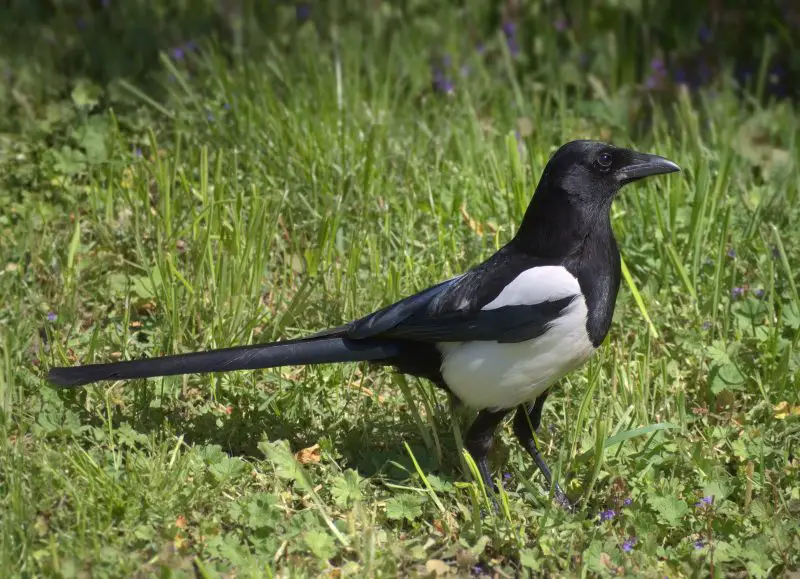
Bold Minds Behind the Black-and-White Beauty
With their striking black-and-white plumage and iridescent blue-green sheen, magpies are as eye-catching as they are intelligent. But these birds aren’t just about looks—they are among the most cognitively advanced species in the avian world, rivaling even crows and ravens in their mental abilities.
The Eurasian Magpie (Pica pica), the most widely studied member of the group, has astounded scientists with behaviors once thought to be exclusive to primates. It is one of the few non-human animals to pass the mirror test, showing clear signs of self-awareness—a rare and profound indicator of intelligence. This ability places magpies in an elite group that includes elephants, dolphins, and great apes.
Magpies are intensely curious and observant, often watching human activity and exploring objects in their environment. They’re notorious for interacting with shiny items—not out of mindless attraction, as folklore suggests, but out of investigative interest. In the wild, they use tools, solve problems, and remember the locations of hidden food caches across seasons.
Socially, magpies are just as fascinating. They live in structured communities, communicate through a variety of vocalizations, and even hold “funerals,” where groups gather around the body of a deceased individual—an unusual and emotionally complex behavior for a bird.
Their adaptability allows them to thrive in a wide range of environments, from rural pastures to bustling suburbs, often nesting in tall trees and feeding on everything from insects and grains to small mammals and carrion. They are omnivores, opportunists, and strategists, much like their crow cousins.
Elegant, sharp, and endlessly intriguing, magpies are living proof that beauty and brains can go hand in hand in the bird world.
5. Jays (Various genera in Corvidae)
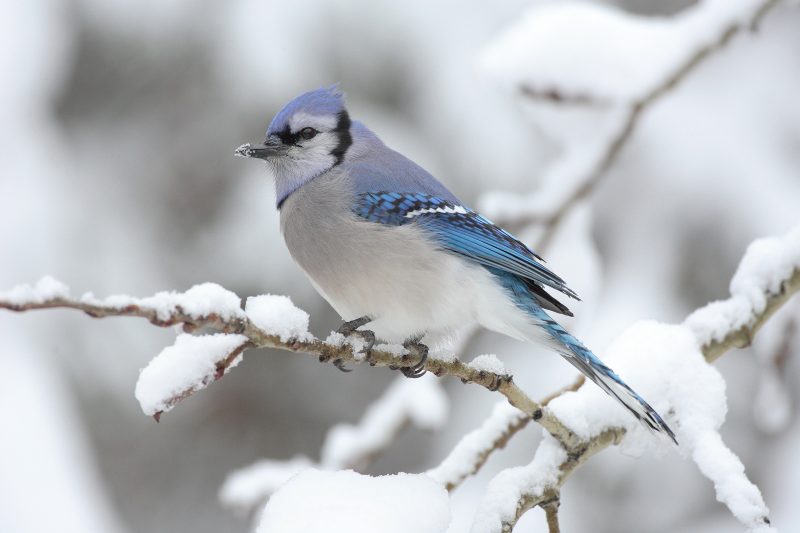
Brilliant Minds in Bold Colors
While many members of the crow family wear feathers in shades of black, jays bring a vivid splash of color to the corvid clan. From the electric blues of the Blue Jay (Cyanocitta cristata) in North America to the earthy pinks and blues of the Eurasian Jay (Garrulus glandarius), these birds are as visually striking as they are intellectually gifted.
Jays may look playful and loud—and they are—but beneath their boisterous personalities lies a sharp, strategic mind. Like crows and magpies, jays are capable of complex thought, including planning for the future, problem-solving, and social deception. They are masters of food storage, often hiding hundreds—sometimes thousands—of seeds or acorns in scattered locations throughout their territory. Even months later, they can retrieve their hidden treasures with astonishing accuracy, using spatial memory and visual landmarks.
One of their most fascinating traits is their ability to mimic sounds. Jays are superb vocal imitators, capable of copying the calls of other birds, the cries of hawks, or even human-made noises like whistles and machinery. This skill serves multiple purposes: startling predators, confusing rivals, or communicating within their group.
Jays are highly social and territorial, forming tight family groups with intricate dominance structures. During the breeding season, they work cooperatively to defend nests, raise young, and warn others of danger. But they’re also known to spy on each other’s food stashes, and some individuals even fake hiding food when they know they’re being watched—evidence of advanced social awareness and cunning.
Whether darting through forests or flashing across suburban yards, jays remind us that intelligence in nature doesn’t always wear black—it sometimes comes with feathers that shimmer in blue, pink, and white, paired with a mischievous mind.
6. Choughs (Pyrrhocorax pyrrhocorax, P. graculus)
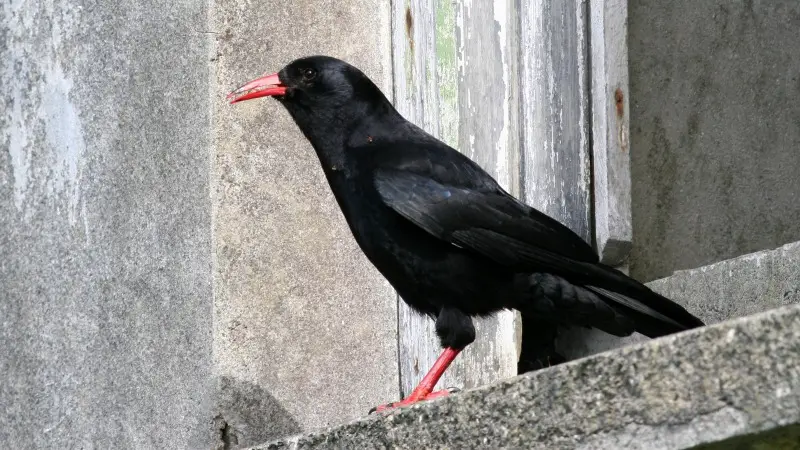
Dancers on the Wind and Masters of the Heights
Perched on wind-blasted cliffs and high mountain slopes, choughs are the sky acrobats of the crow family—elegant, daring, and perfectly adapted to life above the clouds. These striking corvids, though less well-known than their urban relatives, bring their own flair to the family with graceful flight, vivid features, and a love of elevation.
Choughs come in two closely related species: the Red-billed Chough, with a long, slender crimson bill, and the Alpine or Yellow-billed Chough, with a shorter, bright yellow beak. Both have glossy black plumage, reminiscent of crows and ravens, but they are instantly distinguished by their colorful bills, red legs, and buoyant, fluttering flight.
Their aerial skills are extraordinary. Choughs perform looping dives, barrel rolls, and synchronized soaring, often in strong mountain winds. These displays are not just for show—they serve as communication, pair bonding rituals, and, at times, joyful expressions of play. Their flight is so agile and aerobatic that they’ve earned nicknames like “winged dancers” among mountain dwellers.
Choughs live in remote alpine and coastal habitats across Europe, North Africa, and parts of Asia. Nesting on cliffs or steep rock faces, they are remarkably social birds, forming flocks that move together through rugged terrain in search of insects, seeds, and scraps. Their whistling, flute-like calls echo through canyons and ridgelines, replacing the harsh caws of their lower-altitude cousins.
Though part of the Corvus family, choughs lead a lifestyle all their own—isolated, aerial, and exquisitely adapted to the mountains. Their intelligence, loyalty to lifelong mates, and expressive vocalizations all reflect the classic corvid traits, but their high-altitude elegance makes them one of the most unique members of the clan.
7. Grackles (Genus Quiscalus)
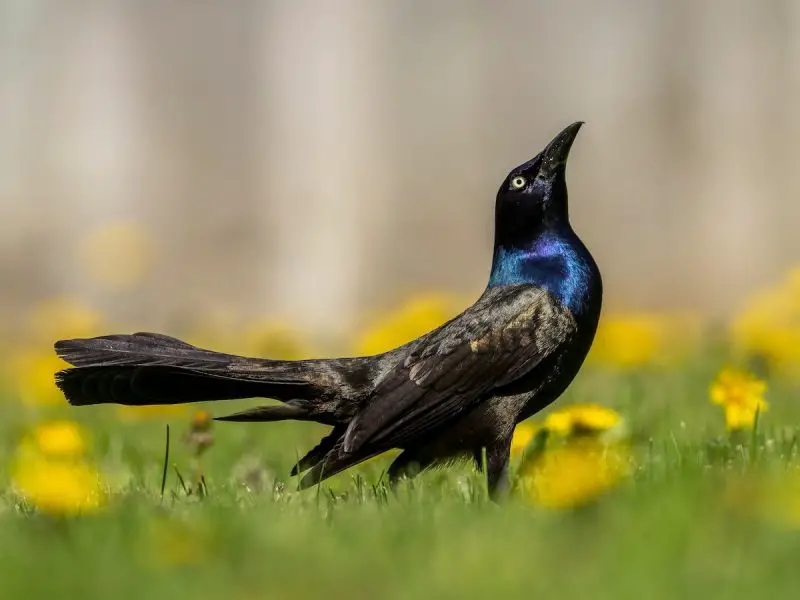
City Slickers in Shimmering Black
At first glance, a grackle might look like a crow dipped in oil—sleek, black, and bold. But a second look reveals something more dazzling: their feathers shimmer with hues of violet, bronze, green, and blue, shifting in the sunlight like polished metal. Though they don’t belong to the crow family, grackles are often called their behavioral cousins for good reason.
Native to North and Central America, grackles—especially the Common Grackle (Quiscalus quiscula)—are masters of urban life. They thrive in parking lots, parks, farms, and city streets, often gathering in noisy, raucous flocks that fill the air with sharp, metallic calls. Their vocalizations are varied and strange, ranging from squeaks and whistles to clicks and rusty hinges—unlike the structured caws of true corvids, but equally expressive.
What grackles lack in direct corvid lineage, they make up for in cleverness and confidence. These birds are opportunistic feeders, capable of raiding crops, opening garbage bins, and even stealing pet food from porches. Their fearless attitude often puts them at odds with humans, but it also showcases their ability to adapt quickly to complex environments—a trait they share with crows.
Socially, grackles are just as impressive. They roost in massive communal gatherings, sometimes numbering in the tens of thousands, and they often cooperate when foraging or mobbing predators. During breeding season, males put on dramatic displays, puffing out feathers and flashing their iridescent colors to attract mates.
Despite their reputation as loud and sometimes pesky urban dwellers, grackles are fascinating survivors, combining intelligence, adaptability, and flair. Their vibrant plumage and bold presence make them unmistakable figures in the modern American landscape, standing shoulder to shoulder—at least behaviorally—with the world’s smartest birds.
8. Starlings (Sturnus vulgaris and others)
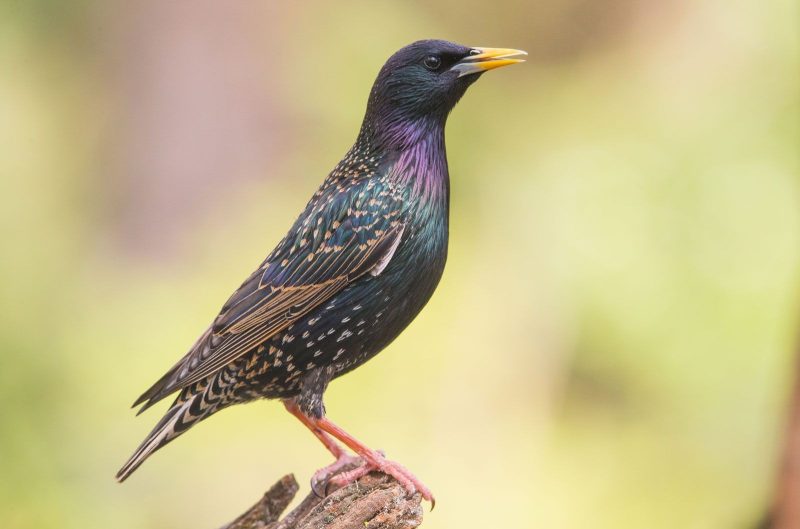
Shapeshifters of the Sky and Sound
Though smaller and sleeker than crows, starlings pack an extraordinary mix of intelligence, beauty, and coordination into their compact frames. The most iconic species, the European Starling (Sturnus vulgaris), has become a familiar sight across Europe, Asia, North America, and beyond—often traveling in vast, synchronized flocks called murmurations that ripple across the sky like living waves.
These murmurations are not just a visual spectacle—they’re a display of highly evolved collective intelligence. In seconds, thousands of individuals twist, dive, and swirl in seamless unity, responding to subtle shifts in their neighbors’ movements to avoid predators and navigate landscapes. Scientists are still unraveling the full complexity behind this aerial ballet, but it’s clear that starlings excel in group coordination and spatial awareness.
Up close, starlings reveal a different kind of magic. Their glossy plumage, dark at first glance, glistens with purples, greens, and blues under the light—sometimes mimicking the appearance of crows, especially when silhouetted on city rooftops or wires. But what sets them apart most is their gift for mimicry. Starlings can replicate the songs of other birds, mechanical sounds, and even fragments of human speech with astonishing clarity. In some cases, they blend multiple sounds into long, complex vocal performances that rival any corvid repertoire.
Adaptability is another starling strength. These birds flourish in urban, suburban, and agricultural environments, nesting in crevices, buildings, and tree hollows. They are opportunistic feeders, eating insects, fruits, grains, and scraps, and they show impressive problem-solving skills when navigating human-dominated spaces.
Despite their reputation as aggressive invaders in some regions, starlings remain astonishing examples of avian intelligence and social coordination. In both sound and sky, they are true performers, blending brilliance and unpredictability into one of nature’s most dynamic packages.
9. Mynas (Acridotheres tristis and others)
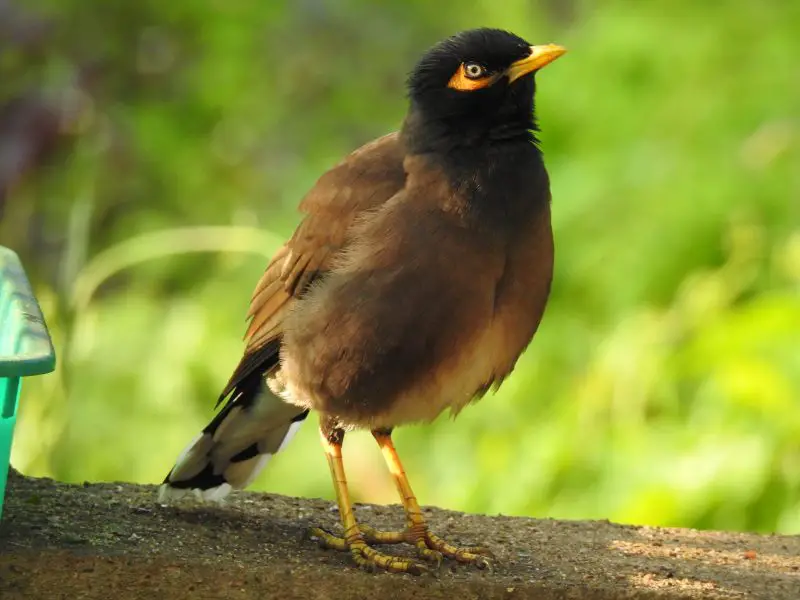
Talkative Tricksters with City Smarts
Mynas may not be part of the crow family, but they certainly behave like they belong. These bold, chatty, and incredibly adaptable birds are found throughout South and Southeast Asia and have spread to cities around the world, thanks to their uncanny ability to thrive in human-dominated environments.
The most iconic among them, the Common Myna (Acridotheres tristis), is instantly recognizable by its brown body, black head, bright yellow eye patch, and matching legs and bill. But beyond their appearance, it’s their personality that truly stands out. Mynas are endlessly vocal, producing a constant stream of chirps, squawks, whistles, and warbles that often mimic the sounds of their surroundings. Some individuals even pick up and reproduce phrases from human speech, much like parrots.
What they lack in genetic relation to crows, they make up for in street smarts and opportunism. Mynas are natural generalists, able to eat just about anything—fruits, insects, scraps, and even small vertebrates. They are often seen hopping confidently through markets, gardens, and traffic jams, fearlessly navigating the chaos of urban life. This flexibility in diet and habitat has made them incredibly successful in colonizing new areas, though in some cases, it’s also led them to become invasive species.
Socially, mynas are highly gregarious, forming small flocks and nesting in loose colonies. They are fiercely territorial during the breeding season and will chase away much larger birds from their chosen nesting spots—often in holes of buildings, streetlamps, or tree cavities.
Mynas are more than just noisy neighbors. They are watchful, quick to learn, and stunningly adaptable, embodying many of the behavioral traits that make crows so remarkable. With their flashy personalities and city-wise instincts, they’ve carved out a place as some of the most charismatic avian urbanites in the world.
10. Black Drongos (Dicrurus macrocercus)
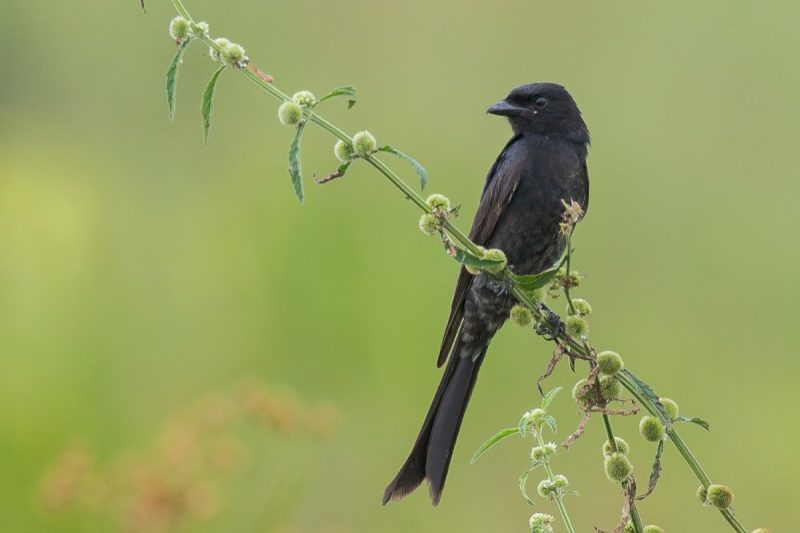
Small in Size, Giant in Courage
Sleek, sharp, and dressed in midnight black, the Black Drongo may resemble a miniature crow—but don’t be fooled by its size. This bird is a fearless aerial warrior, renowned across Asia for its unshakable bravery, vocal mimicry, and aggressive territorial defense.
The Black Drongo’s plumage glistens with a bluish sheen under sunlight, and its distinct deeply forked tail gives it a silhouette like a twin-bladed dagger in flight. Native to the Indian subcontinent and parts of Southeast Asia, it frequents open fields, farmlands, and roadsides, where it perches conspicuously on wires or fence posts, ever on alert for intruders or prey.
What sets this bird apart is its astonishing fearlessness. Black Drongos routinely chase off birds many times their size, including kites, hawks, and even crows. Farmers across India call it the “cow bird” because it often follows grazing livestock, snatching up insects stirred from the grass and fearlessly mobbing any predator that dares approach.
Like crows, drongos are masters of mimicry. They can imitate the calls of multiple species—including alarm calls of other birds—to confuse, deceive, or manipulate their surroundings. In some documented cases, drongos have used false alarm calls to scare off other animals from food, only to swoop in and steal the meal themselves—an impressive act of tactical deception.
Though not a corvid, the Black Drongo shares their cunning, boldness, and adaptability. It thrives in both rural and urban environments, is comfortable living close to humans, and demonstrates problem-solving behavior that suggests a clever, calculating mind behind those fiery eyes.
Small but mighty, the Black Drongo is proof that courage and intelligence don’t always come in large packages. It may lack the fame of crows and ravens, but it absolutely deserves a place among their behavioral kin.
11. Cowbirds (Molothrus species)
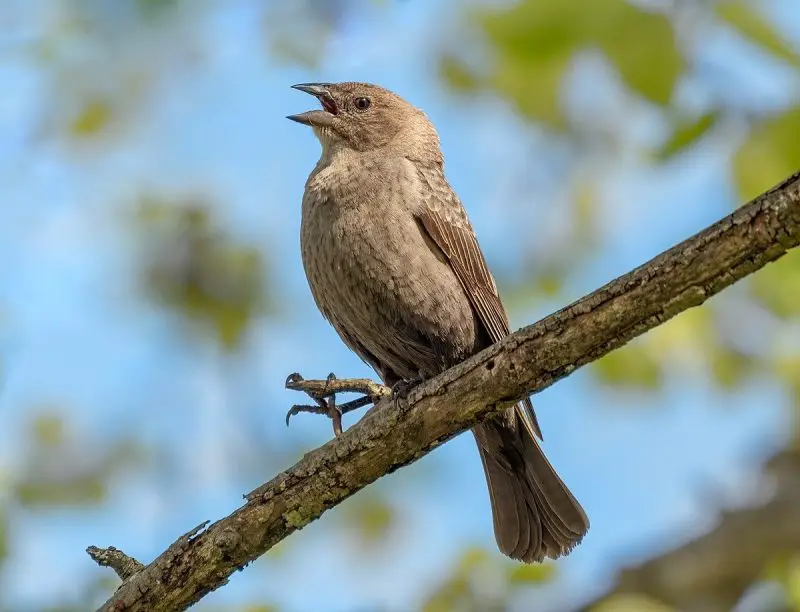
Masters of Deception on the Open Plains
Cowbirds may not look much like crows at first glance—with their more modest size and plainer appearance—but they exhibit a kind of strategic genius that firmly places them in the realm of behavioral brilliance and opportunism, right alongside the corvids.
Belonging to the blackbird family, cowbirds—particularly the Brown-headed Cowbird (Molothrus ater)—are native to North and Central America, where they inhabit grasslands, agricultural fields, and forest edges. Historically, they followed roaming bison herds, feeding on insects stirred up by the animals. Today, they’ve adapted smoothly to the modern equivalent: cattle pastures and farmlands, making them a common sight across wide-open landscapes.
What truly sets cowbirds apart is their remarkably cunning reproductive strategy. Rather than building nests or raising chicks themselves, female cowbirds practice brood parasitism—laying their eggs in the nests of other bird species. Once hatched, the cowbird chick often grows faster than its nestmates, monopolizing food and parental care. This behavior, while controversial in terms of ecological impact, is a highly successful evolutionary tactic, requiring careful timing, spatial awareness, and even stealth.
Cowbirds are also socially aware and adaptive. They form flocks outside the breeding season, communicate with a variety of whistles and gurgling calls, and quickly exploit new food sources or habitats. Like crows, they are opportunistic feeders, consuming seeds, insects, and grain, and they readily adjust to human-altered environments.
Though their nesting behavior is often criticized—especially in conservation contexts where they threaten smaller songbird populations—cowbirds are a striking example of nature’s strategic minds. Their clever manipulation of the avian world, combined with bold adaptability and social intelligence, gives them a curious kinship with the corvids, even if they walk a darker evolutionary path.
12. Ani Birds (Crotophaga species)
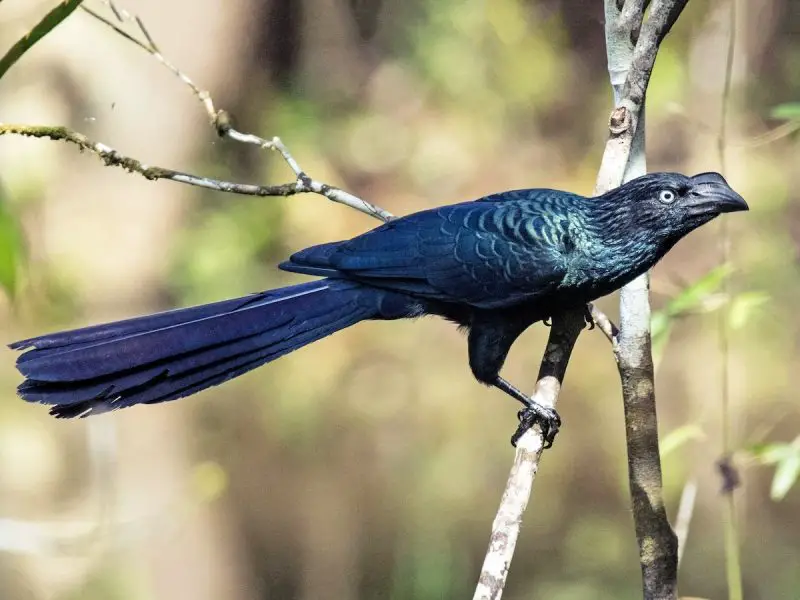
Cooperative Spirits in the Tropical Shadows
In the dense, sun-drenched landscapes of Central and South America, the Ani birds move through the foliage like whispers in black silk—strange, social, and endlessly intriguing. With their sooty plumage, long tails, and unusually large, ridged bills, these birds look as peculiar as they sound, and their haunting calls only deepen their mystique.
There are several species of anis, including the Smooth-billed Ani (Crotophaga ani) and Groove-billed Ani (Crotophaga sulcirostris), all of which share a fondness for warm, open tropical habitats such as savannas, scrublands, and forest edges. Their oversized, arched bills give them an almost prehistoric appearance, and their feathers shimmer with deep violet or bluish undertones when caught by the sun.
But it’s not just their looks that make them unique—it’s their unusual family dynamics. Ani birds are cooperative breeders, meaning multiple females lay eggs in a communal nest, which is then jointly incubated and guarded by the entire group. Adults help raise each other’s chicks, taking turns brooding, feeding, and defending against predators. This rare behavior is one of the few examples in the bird world of a truly shared parenting system, not unlike the social cooperation seen in some crow species.
Their vocalizations are equally strange and compelling—wheezes, squeals, rattles, and descending whistles—sounds that seem to hover somewhere between avian language and jungle ambiance. These calls play a key role in maintaining cohesion within their group and warning others of danger.
Though not part of the crow family, ani birds display a kind of intelligent cooperation and group-mindedness that mirrors some of the most advanced corvid behaviors. In the tropical heat, where survival often demands unity, anis thrive through collaboration and kinship, carving out a unique niche as one of nature’s more mysterious social strategists.
13. Currawongs (Strepera species)
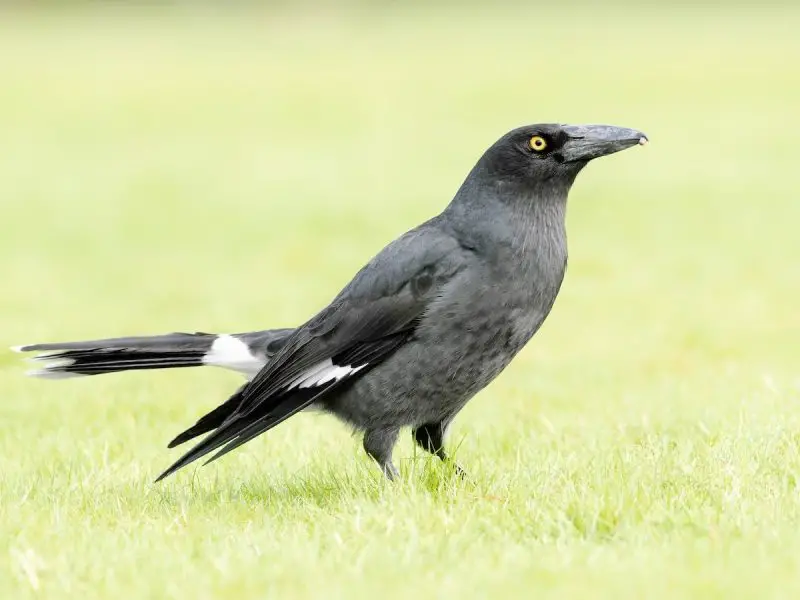
Echoes of Intelligence in the Eucalyptus Canopy
High in the forests and woodlands of Australia, currawongs call out with voices that echo like chimes through the gum trees—melodic, haunting, and unmistakably intelligent. With their sleek black or gray plumage, sharp yellow eyes, and confident gait, these birds are often mistaken for crows. And while they belong to a different family (Artamidae), currawongs certainly look, act, and sound like honorary corvids.
There are three main species—Pied Currawong, Grey Currawong, and Black Currawong—each adapted to different regions across Australia. What unites them is their keen adaptability, omnivorous diet, and their striking vocal range, which includes clear flute-like notes, guttural croaks, and rich, drawn-out whistles. Their calls serve not only to communicate, but to mark territory and strengthen pair bonds, creating a complex soundscape across their forested homes.
Like crows, currawongs are bold, curious, and opportunistic. They forage across both wild and urban environments, consuming everything from insects and small reptiles to fruit, grains, and even scraps scavenged from human settlements. Their ability to exploit seasonal abundance—like raiding orchards or preying on fledgling birds during breeding season—has earned them both admiration and criticism from farmers and conservationists alike.
Despite not being true corvids, currawongs display many crow-like traits, including problem-solving skills, social awareness, and a confident presence in human-modified landscapes. They’re known to open trash bins, steal unattended food, and observe people with unmistakable calculation—reminding observers that intelligence isn’t limited to one avian family tree.
In Australia’s ever-changing landscape, currawongs thrive as vocal, versatile survivors—a living chorus of wit and adaptability wrapped in black feathers and golden-eyed focus.
14. Butcherbirds (Cracticus species)
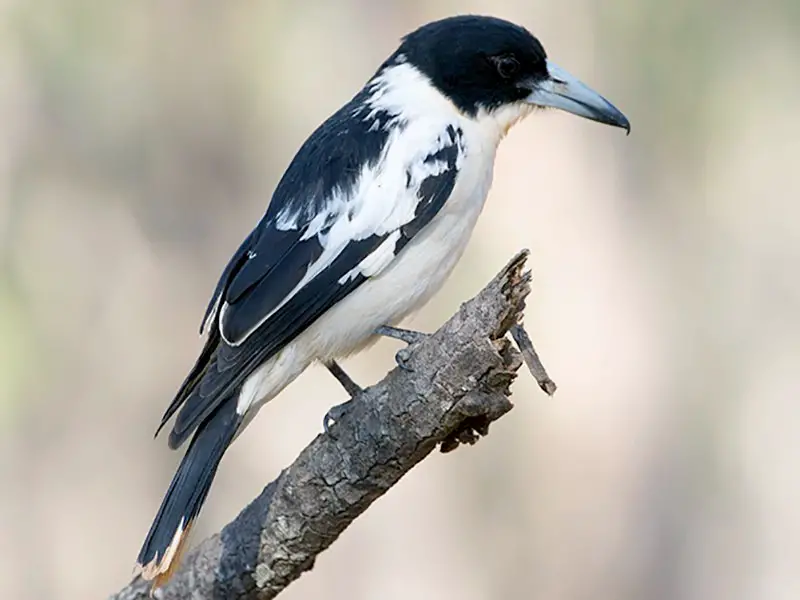
Sharp Beaks, Sharper Minds
Lurking in the trees of Australia and New Guinea, the Butcherbird may sing like a songbird, but it hunts like a raptor. Despite its modest size, this clever and carnivorous bird combines the melodic beauty of a thrush with the cunning and brutality of a corvid, earning its chilling name from both its behavior and its weaponry.
Closely related to currawongs and Australian magpies, butcherbirds belong to the same family (Artamidae), and like their larger cousins, they are highly intelligent, bold, and adaptable. The most defining feature of a butcherbird is its stout, hooked beak, which resembles that of a falcon. It’s no mere ornament—this formidable tool allows the bird to seize, kill, and tear apart prey that includes insects, lizards, small birds, and rodents.
But butcherbirds don’t stop at the kill. True to their name, they’re known for their habit of impaling prey on thorns, twigs, or even barbed wire—a method both for storing food and holding it steady while they rip it apart. This gruesome practice mirrors the caching behavior seen in corvids, showcasing a foresight and practicality rare among songbirds.
Though efficient hunters, butcherbirds are also exquisite vocalists. Their calls are complex, rich, and hauntingly beautiful—sometimes mimicking the sounds of other birds or environmental noises. These songs serve as both territory markers and communication between mates or family members, reflecting a social awareness that deepens their corvid-like character.
Often spotted in woodlands, urban parks, or perched on fence posts scanning the ground, butcherbirds embody a perfect fusion of song and savagery, calculation and charisma. Like crows, they are strategic, opportunistic, and unforgettable—proof that brilliance in the bird world comes in many forms, and not always with a gentle beak.
15. Tuis (Prosthemadera novaeseelandiae)
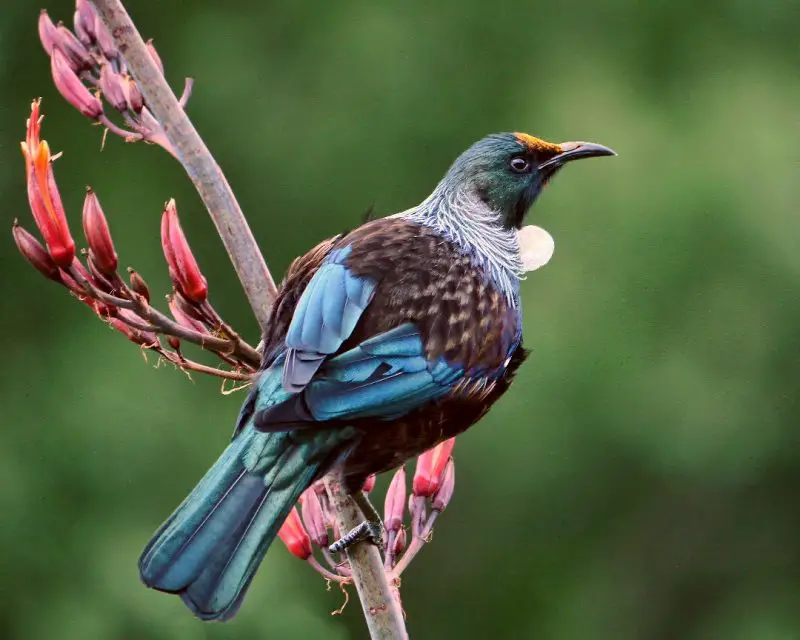
The Echoing Songmasters of Aotearoa
With shimmering black-green plumage, a distinctive white throat tuft, and a voice that bends the very air, the Tui is one of New Zealand’s most enchanting birds. Though not related to crows, these members of the honeyeater family possess a dazzling blend of intelligence, adaptability, and vocal brilliance that earns them a rightful place among the behavioral cousins of corvids.
Found throughout New Zealand’s forests, farmlands, and suburban gardens, Tuis are instantly recognizable. Their dark, iridescent feathers flash with hues of blue, green, and bronze, and their fluffy white throat plumes—sometimes called “poi balls”—give them a dignified, almost regal appearance. But it’s their remarkable voice that truly makes them legendary.
Tuis are among the most complex songbirds on Earth. Their songs are a surreal symphony of clicks, gurgles, flutes, creaks, and liquid whistles, many of which are mimicked from other birds or even ambient sounds in their environment. Some individuals imitate car alarms, human speech, or camera shutters with uncanny accuracy. Their vocal range is so broad that portions of their song occur beyond the range of human hearing.
Like crows, Tuis are highly intelligent and opportunistic. They can solve basic puzzles, recognize individual humans, and remember which flowers or feeders offer the best rewards. Their diet is centered on nectar, especially from native flax and kowhai trees, but they also eat fruit and insects, adjusting their feeding strategies depending on what’s available.
Tuis are territorial yet social, especially when nectar is abundant. Males will aggressively defend flowering trees, chasing off rivals with noisy aerial pursuits, while also performing elaborate display flights to impress potential mates. Despite their combativeness, they often gather in small groups, exchanging calls in what sound like sophisticated conversations.
To the Māori, the Tui is a sacred bird, a messenger between the earthly world and the spiritual. To scientists and bird lovers alike, it’s a symbol of natural genius—a songbird with the mind of a mimic, the habits of a strategist, and a voice like no other.
Conclusion: More Than Just Crows
While crows stand out for their intelligence, social complexity, and adaptability, they are far from alone in these traits. Many other birds—both within and outside the corvid family—mirror their cleverness, behavior, and appearance. From the chatty myna to the cunning magpie, these birds prove that evolution has crafted intelligence in many forms, feathered and fascinating.
Whether you’re a birdwatcher, researcher, or casual observer, keeping an eye out for these 15 birds like crows can open a new window into the secret lives of some of the world’s most remarkable avian minds.

